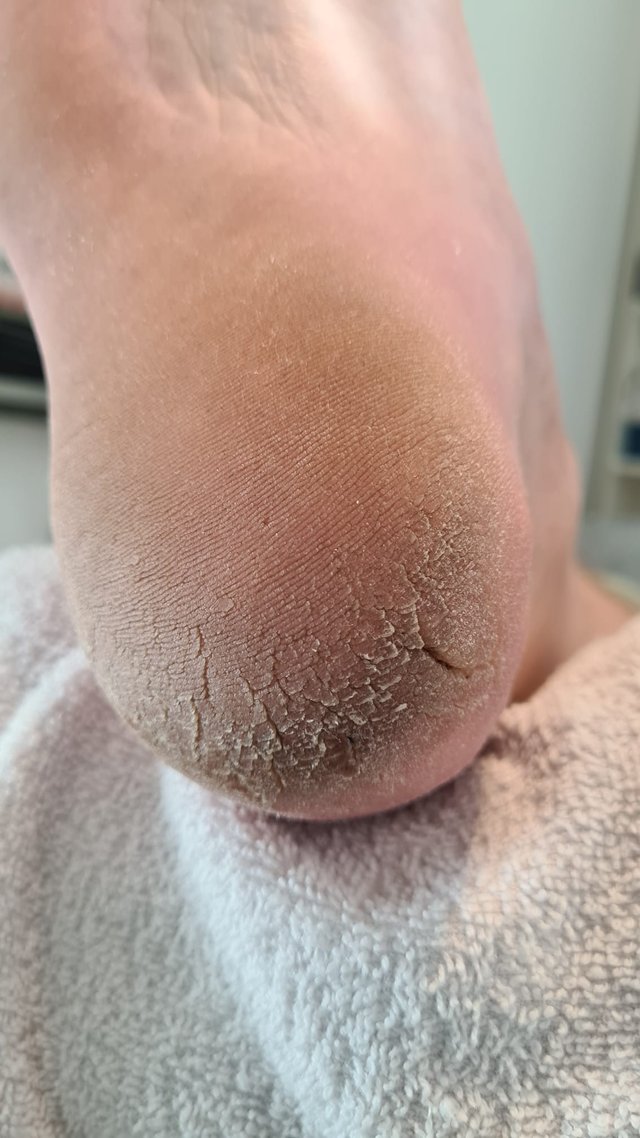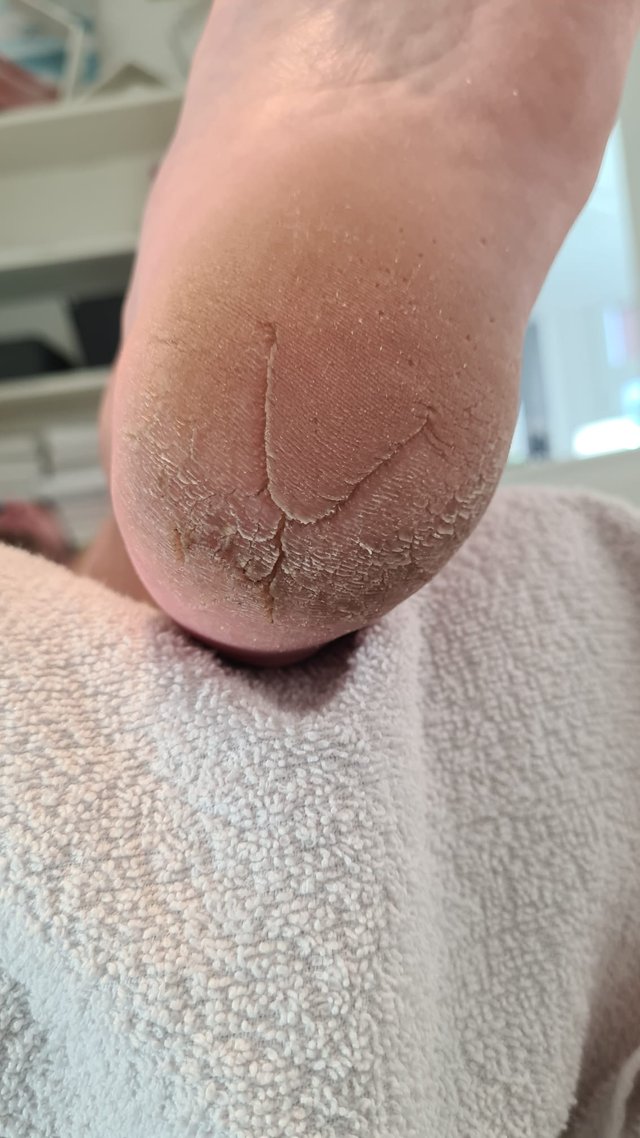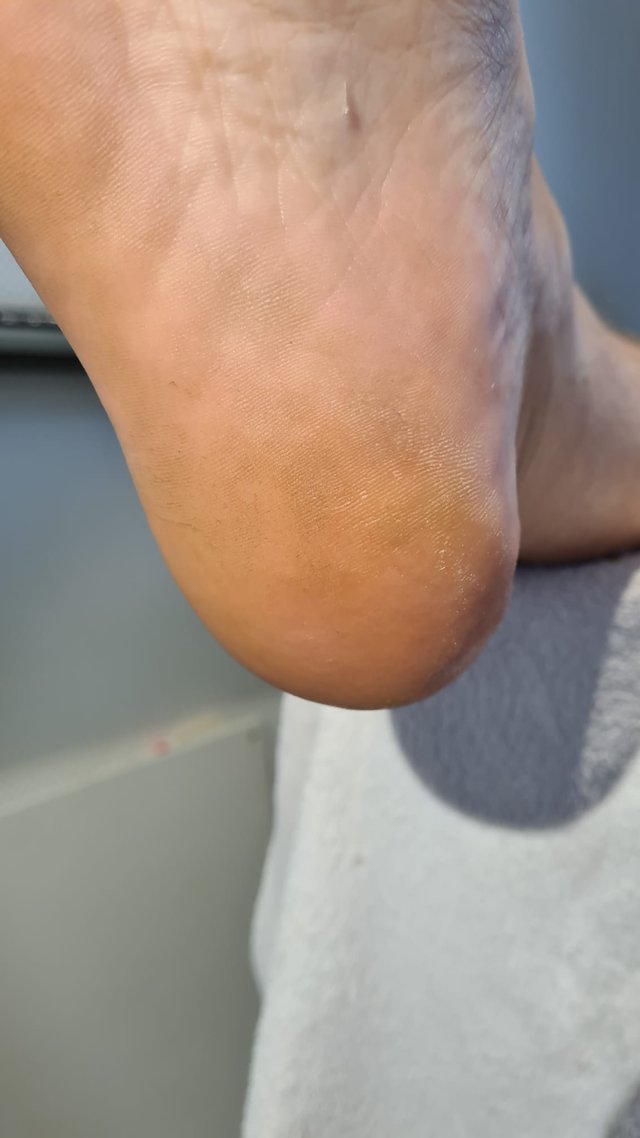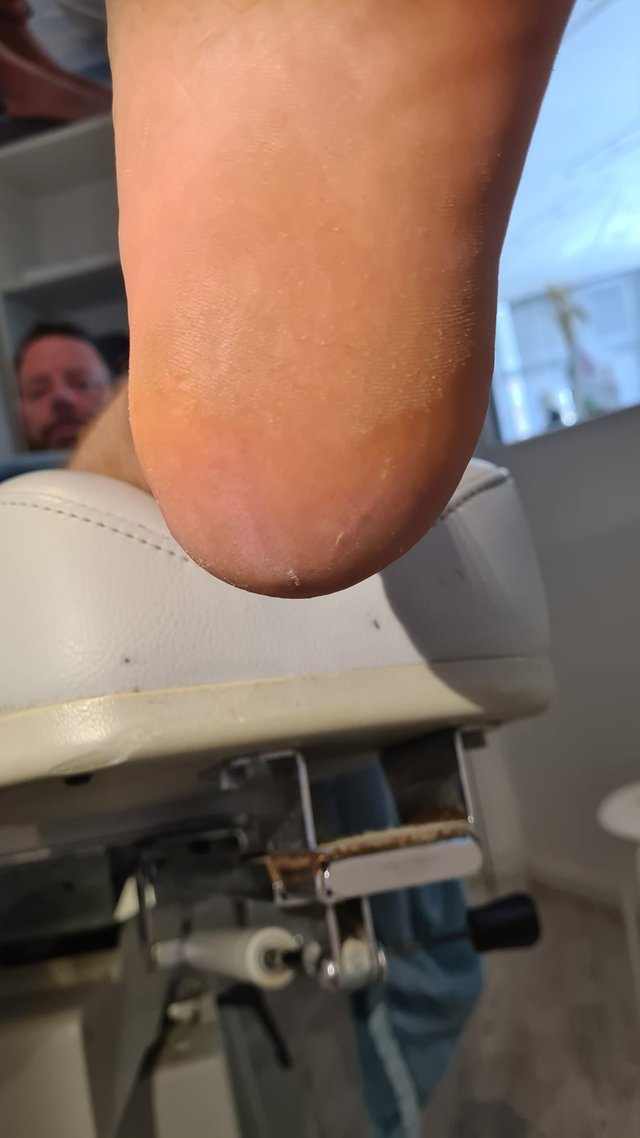Self-care, foot care
Are you neglecting your feet? Self-care is not just about pampering your body and mind; it also involves taking care of your feet! Your feet work hard every day, carrying your weight and allowing you to move around. So why not give them the attention they deserve? In this article, we will explore the importance of foot care and share some simple yet effective self-care tips to keep your feet happy and healthy. From regular washing and moisturizing to wearing comfortable shoes and practicing foot exercises, we'll cover it all. Not only will proper foot care prevent discomfort and pain, but it can also prevent common foot problems such as calluses, corns, and blisters. So kick off your shoes, put your feet up, and let's dive into the world of self-care for your feet. Your feet will thank you!
The importance of self-care and foot care
Self-care has become a popular concept in recent years, with people recognizing the importance of taking care of their physical and mental well-being. However, one area that often gets overlooked is foot care. Your feet are the foundation of your body, and neglecting them can lead to a host of problems.
Proper foot care is not just about vanity; it is essential for maintaining overall health and well-being. Your feet are subjected to constant pressure and stress, and if not taken care of, they can develop various issues such as calluses, corns, blisters, and even infections. Moreover, foot problems can also affect your posture and balance, leading to discomfort and pain in other areas of your body.
Taking care of your feet involves simple yet effective practices that can make a significant difference in your overall foot health. By incorporating foot care into your self-care routine, you can prevent many common foot problems and ensure that your feet remain happy and healthy for years to come.
Common foot problems and their causes
Before diving into foot care tips, let's explore some of the most common foot problems and their causes. Understanding these issues can help you identify any existing problems and take preventive measures to avoid future complications.
Calluses: Calluses are thick and hardened areas of skin that develop due to repeated friction or pressure. They usually form on the soles of the feet or on the toes. Ill-fitting shoes, excessive walking or running, and improper foot hygiene can contribute to the development of calluses.
Corns: Corns are small, round, and thickened areas of skin that often develop on the tops or sides of the toes. They are caused by excessive pressure or friction, usually from wearing tight shoes or engaging in activities that put repeated stress on the feet.
Blisters: Blisters are fluid-filled pockets that form on the skin as a protective response to friction or pressure. They can be painful and make it difficult to walk or wear shoes comfortably. Blisters are commonly caused by ill-fitting shoes, excessive moisture, or intense physical activity.
By understanding the causes of these common foot problems, you can take proactive steps to prevent them through proper foot care. Let's explore some tips for maintaining healthy feet.
Tips for maintaining healthy feet
Keeping your feet healthy doesn't have to be complicated. By incorporating a few simple habits into your daily routine, you can ensure that your feet stay in top shape. Here are some tips for maintaining healthy feet:
Wash your feet daily: Just like any other part of your body, your feet need regular washing to remove dirt, sweat, and bacteria. Use warm water and a mild soap to gently cleanse your feet. Pay close attention to the areas between your toes and dry your feet thoroughly after washing.
Moisturize regularly: Dry feet can lead to cracked and uncomfortable skin. To prevent this, moisturize your feet daily with a foot cream or lotion. Focus on the heels and soles of your feet, as these areas tend to get dry and rough.
Trim your toenails properly: Toenails should be trimmed straight across and not too short. Avoid cutting them too close to the skin, as this can lead to ingrown toenails. Use clean and sharp nail clippers to prevent any damage or infections.
Wear comfortable shoes that fit well: One of the most important aspects of foot care is choosing the right footwear. Avoid shoes that are too tight, as they can cause discomfort and restrict blood circulation. Opt for shoes with proper arch support and cushioning to reduce the risk of foot problems.
Practice good foot hygiene: In addition to washing your feet, it's essential to practice good foot hygiene. This includes keeping your feet dry, wearing clean socks, and changing them daily. Avoid walking barefoot in public areas to reduce the risk of infections.
Protect your feet in public spaces: Public places like swimming pools, gyms, and locker rooms can harbor bacteria and fungi that can cause infections. Protect your feet by wearing flip-flops or sandals in these areas to minimize direct contact.
By incorporating these tips into your daily routine, you can maintain healthy and happy feet. However, foot care doesn't stop here. Choosing the right footwear is crucial for foot health.
Choosing the right footwear for foot health
The shoes you wear play a significant role in the health of your feet. Ill-fitting or unsupportive footwear can cause a range of foot problems, including blisters, corns, and even structural issues like bunions. To ensure foot health, consider the following factors when choosing footwear:
Size and fit: Always wear shoes that fit properly. Your shoes should provide enough room for your toes to move freely without being too tight or too loose. Consider getting your feet measured professionally to determine the right shoe size for you.
Arch support: Look for shoes that offer proper arch support. This is especially important if you have flat feet or high arches. The right arch support can help distribute weight evenly and reduce the risk of foot pain or injuries.
Cushioning and shock absorption: Shoes with adequate cushioning and shock absorption can help protect your feet from the impact of walking or running. Look for shoes with cushioned insoles and supportive midsoles.
Breathability: Your feet need to breathe, so opt for shoes made from breathable materials. This can help reduce the risk of excessive sweating, odor, and fungal infections.
Activity-specific footwear: Different activities require specific types of footwear. If you engage in activities like running, hiking, or playing sports, invest in shoes designed for those activities. They provide the necessary support and protection for your feet during specific movements.
Remember, wearing the right shoes is not only essential for foot health but also for overall body alignment and posture. Ill-fitting shoes can lead to discomfort and pain in other areas, such as your knees, hips, and lower back. Now that we've covered the importance of footwear, let's move on to exercises and stretches for foot health.
Exercises and stretches for foot health
Just like any other part of your body, your feet can benefit from regular exercises and stretches. These can help improve flexibility, strengthen muscles, and prevent common foot problems. Here are some exercises and stretches to incorporate into your foot care routine:
Toe stretches: Sit on a chair and extend one leg in front of you. Use your hand to gently pull your toes back towards your shin until you feel a stretch in the top of your foot. Hold for 10-15 seconds and repeat 3-5 times on each foot.
Ankle circles: Sit on the edge of a chair and lift one foot off the ground. Rotate your ankle in a circular motion, first in one direction and then in the other. Repeat 10 times and switch to the other foot.
Heel raises: Stand with your feet hip-width apart and slowly rise up onto your tiptoes. Hold for a few seconds and then lower your heels back to the ground. Repeat 10-15 times to strengthen the muscles in your calves and feet.
Toe curls: Place a small towel or cloth on the floor and use your toes to scrunch it up towards you. Release and repeat 10-15 times to strengthen the muscles in your toes and arches.
Plantar fascia stretch: Sit on a chair and cross one foot over the opposite knee. Gently pull back on your toes until you feel a stretch in the arch of your foot. Hold for 10-15 seconds and repeat on the other foot.
Incorporate these exercises and stretches into your daily routine to keep your feet strong, flexible, and pain-free. However, if you're dealing with existing foot problems, you may need additional remedies and treatments.
DIY foot care remedies and treatments
While proper foot care practices can do wonders for preventing foot problems, sometimes you may need extra care to address specific issues. Here are some DIY remedies and treatments for common foot problems:
Callus and corn removal: Soak your feet in warm water for 10-15 minutes to soften the skin. Use a pumice stone or foot file to gently exfoliate the calluses or corns. Avoid using sharp objects or cutting the skin, as this can lead to infections.
Blisters: If you have a blister, avoid popping it as it can increase the risk of infection. Instead, cover it with a clean, sterile bandage to protect it and allow it to heal naturally. If the blister bursts on its own, clean the area with mild soap and water and apply an antiseptic ointment.
Foot soaks: Treat your feet to a relaxing and rejuvenating foot soak. Add Epsom salt or essential oils to warm water and soak your feet for 15-20 minutes. This can help relieve pain, reduce swelling, and soften the skin.
Moisturizing masks: Pamper your feet with a moisturizing mask. Apply a thick layer of foot cream or a homemade mixture of coconut oil and honey to your feet. Cover them with plastic wrap or put on socks and leave the mask on for at least 30 minutes. Rinse off and enjoy soft, hydrated feet.
Remember, these DIY remedies and treatments are meant to complement your regular foot care routine and address minor issues. If you're experiencing persistent pain, infections, or severe foot problems, it's essential to seek professional help.
Professional foot care services and treatments
In some cases, professional foot care services and treatments may be necessary to address more complex foot problems. These services are typically provided by podiatrists or foot care specialists. Here are some common professional foot care treatments:
Nail care: If you're unable to trim your toenails properly or have ingrown toenails, a podiatrist can provide professional nail care, including trimming, shaping, and treating ingrown nails.
Corn and callus removal: If you have stubborn or recurring corns or calluses, a podiatrist can safely remove them using specialized tools and techniques. They can also provide advice on preventing their recurrence.
Custom orthotics: If you have foot pain or structural issues, a podiatrist can prescribe custom orthotics. These are inserts that fit inside your shoes and provide support and alignment for your feet.
Foot therapy: In some cases, foot therapy may be recommended to address specific foot problems. This can include exercises, stretches, massage, and other modalities to improve foot function and relieve pain.
If you're experiencing persistent foot pain, discomfort, or have any concerns about your foot health, it's best to consult a qualified professional. They can assess your specific situation and provide appropriate treatments and recommendations.
Self-care practices for overall well-being
Taking care of your feet is not just about physical health; it also contributes to your overall well-being. Incorporating self-care practices into your routine can help reduce stress, improve relaxation, and boost your mood. Here are some self-care practices for your feet and overall well-being:
Foot massages: Treat yourself to a relaxing foot massage. Use a foot roller, massage ball, or your hands to apply gentle pressure to the soles of your feet. This can help relieve tension, improve blood circulation, and promote relaxation.
Aromatherapy foot baths: Add a few drops of essential oils like lavender or peppermint to a foot bath and soak your feet for a calming and rejuvenating experience. The aroma of the oils can help relax your mind and enhance the therapeutic benefits of the foot soak.
Yoga or meditation: Engaging in yoga or meditation can help reduce stress and promote overall well-being. Certain yoga poses and meditation techniques can also provide specific benefits for your feet, such as improved flexibility and relaxation.
Elevate your feet: After a long day, give your feet a break by elevating them. Lie down and prop your feet up on a pillow or cushion. This can help reduce swelling, improve blood circulation, and provide relief from tired or achy feet.
By incorporating these self-care practices into your routine, you can prioritize your foot health while also promoting overall well-being.
Conclusion: Prioritizing self-care and foot health
Self-care is not just a buzzword; it is a crucial part of maintaining physical, mental, and emotional well-being. And when it comes to self-care, let's not forget about our feet. They work tirelessly to support us, and it's our responsibility to give them the care and attention they deserve.
By following the tips and practices outlined in this article, you can ensure that your feet remain happy and healthy. From daily foot care routines to choosing the right footwear, practicing exercises and stretches, and exploring DIY remedies and professional treatments when needed, you can prevent common foot problems and maintain optimal foot health.
Remember, foot care is not just about vanity; it's about taking care of your entire body. Your feet are the foundation of your movement and posture, and neglecting them can lead to pain and discomfort in other areas. So make self-care and foot care a priority, and your feet will thank you for it!
So kick off your shoes, take a moment to appreciate your feet, and incorporate these foot care practices into your daily routine. Your feet will thank you with every step you take towards a healthier, happier you.



